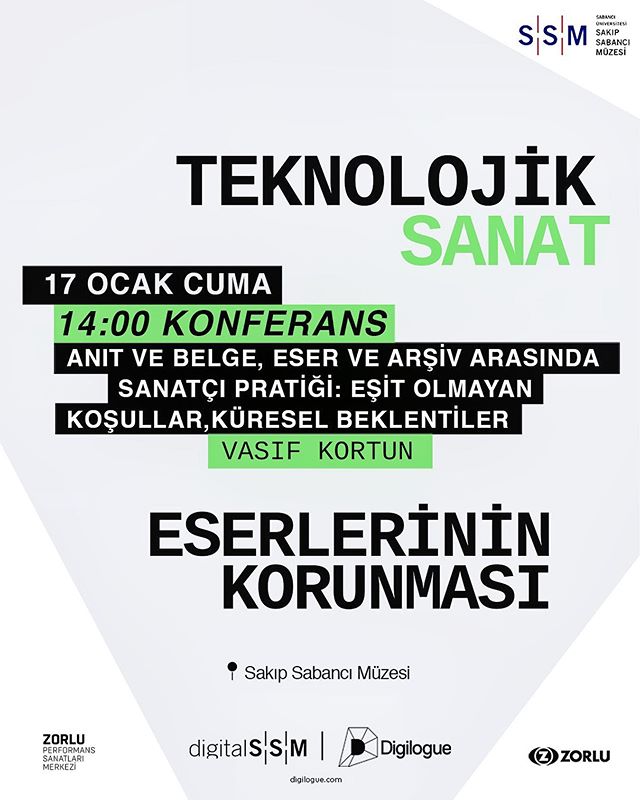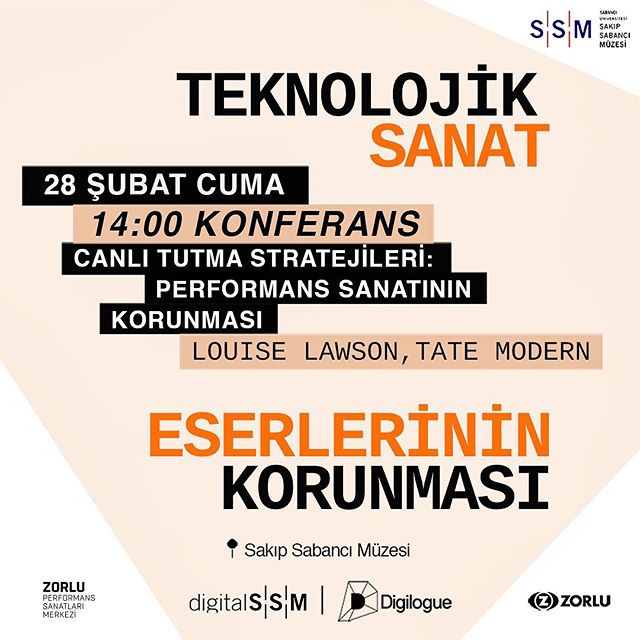Technological Arts Preservation
Today, the interest in new media technologies such as digital media, video, interactive art, computer graphics and animations is rapidly increasing, the question of how to move such artworks into the future will be sought considering the rapid transformation in technology.
DigitalSSM, which deems art and knowledge as a legacy and promotes digital archiving by developing a new strategy for preserving them and making them accessible, started its leading project “Technological Arts Preservation” with a panel in November 2019.
Tags
Digilogue, which deals with ‘digital transformation’, one of today’s most striking topics, is answering the question, “How long can digital art survive?” with the professionals of the field by contributing to the project “Technological Arts Preservation” which is initiated on the basis of this theme by digitalSSM, the archive and research organization of Sabancı University Sakıp Sabancı Museum. Digilogue aims to add a new perspective to this program by starting from the projects it has carried out in the name of digitalization and the network it has acquired in this context.
SSM, who started the program with a panel called “How Digital Art Will Be Carried into The Future” on November 15th 2019, has dealt with striking topics like “Software-based Artworks Preservation” or “Internet Art Preservation”. On November 16th, it organized a workshop themed “Time-based Media Conservation” with the participation of important names from both local and international organizations. The project continued with the conference themed “How Digital Artworks Resist Time” and it put an emphasis on “The Reconstruction of Media and Digital Artworks in the Context of Media Archaeology”.
Talks
Vasıf Kortun
Monument and Document, Artist Practice Between the Work and the Archive: Unequal Conditions, Global Expectations
During the January 17th session of the conference series, Vasif Kortun, Chairman of the Board of Directors of Foundation of Arts Initiatives, gave a speech entitled “Monument and Document, Artist Practice Between the Work and the Archive: Unequal Conditions, Global Expectations”. The main line of the speech was the use of technology as a material, originality in the work of art, the importance of “elimination”in the process of preservation, and the evaluation of the whole process within the scope of ethical values.


Louise Lawson
Strategies for Keeping It Live: Conservation of Performance
Performance art is an art form based on creation, destruction, visibility, and disappearance, leading to “unknown results”. Lawson explains the purpose of conservation as “gathering enough information to understand these mergers and the decisions that lead to their change over time.” In this case, how can something that is deemed not reproducible be preserved? How can such a productive activity be revived without losing its original intention?
Videos
The program will continue throughout 2020 with this collaboration in the upcoming months; In April, “The Lives of Network-based Artworks” and in May, “Web Archiving- Gathering Today For the Future”. It deals with the future of digital art through panels that examine the imprint of digital art in different disciplines.
Throughout the program that will proceed as a 5-day panel series between January and May, academics from different institutions, media, and digital art conservators, software engineers, researchers, artists, art professionals, and knowledge managers will participate the panels and the topics such as the protection of technological artworks, the role of the software programs in this context, the protection of works in the internet environment and the effective strategies that will make technological artworks available in the future will be discussed.
